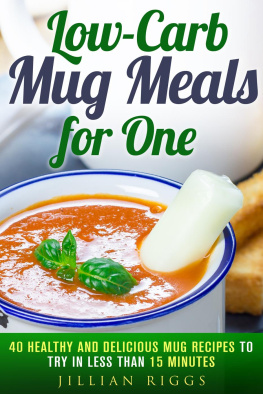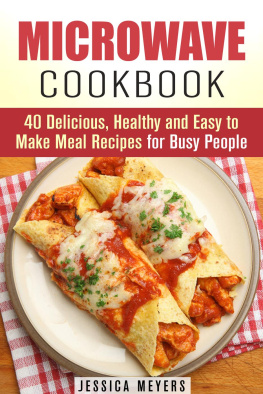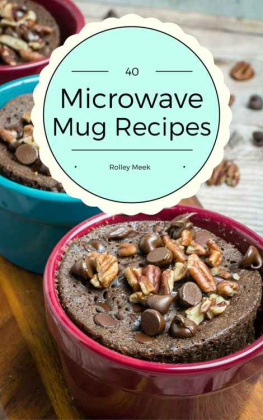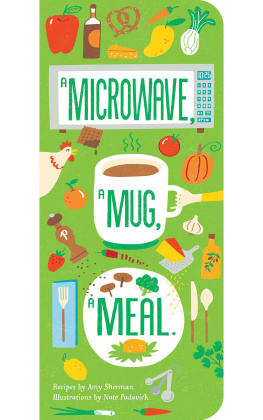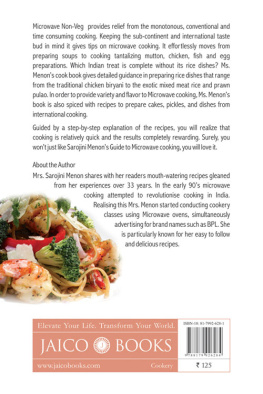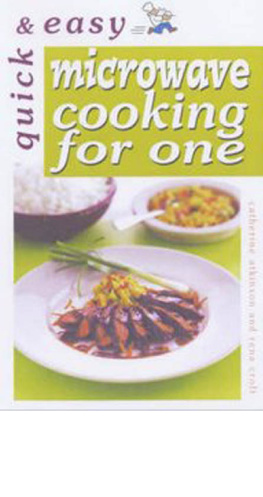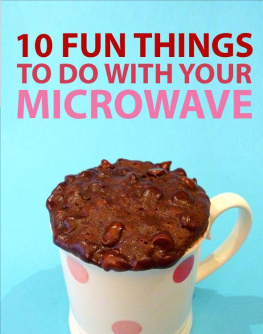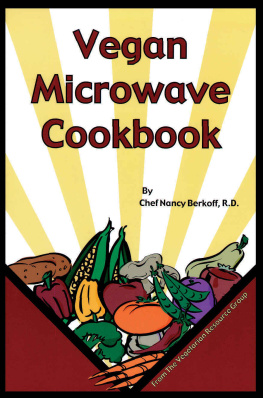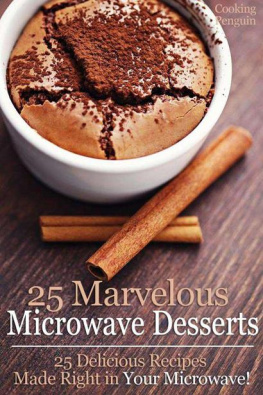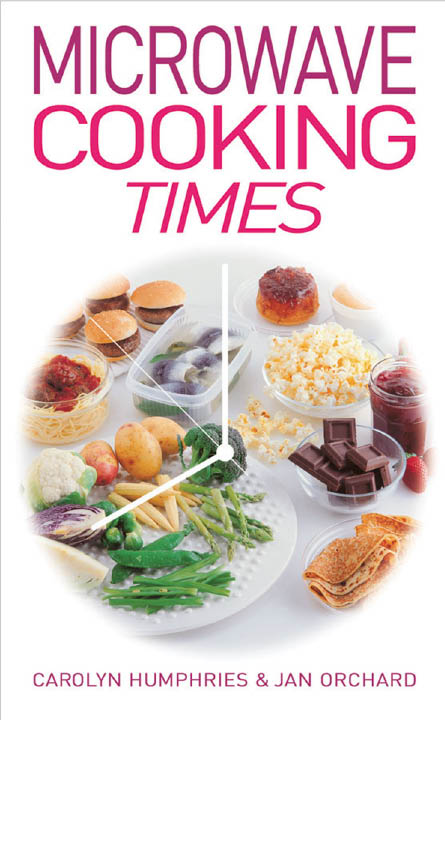Your microwave should be your kitchens greatest asset. Many people use one exclusively; I prefer to use mine in conjunction with my conventional cooker to get the best of both worlds. But whether you are cooking for a large family or living on your own, microwave cooking is fast, convenient and economical. It also reduces the washing up, because many foods that normally stick with a vengeance to the saucepan or dish - boiled milk, scrambled eggs or porridge for example - dont stick at all when cooked in the microwave. In addition, many dishes can be cooked and served in the same container, making things even simpler and quicker.
To get the most out of your microwave, you need to understand how it works and learn a few basic principles, such as what containers you can and cant use and how to adapt your normal cooking methods when necessary. I have set out all this information in the first half of this book. In the second part, I explain exactly how to defrost, cook and reheat every type of food you can successfully prepare in your microwave oven to achieve the best possible results with confidence. This new, improved Microwave Cooking Times will be the most useful microwave cookery book you have ever bought, and with it to hand you need never be wary of your microwave oven again.
Understanding Your Microwave Oven
What is microwaving?
In a conventional cooker, heat is radiated round the food, cooking it from the outside inwards. This gives it the traditional brown, cooked appearance on the surface. In a microwave cooker, the food is cooked by microwaves, which are similar to radio waves. They are converted from ordinary electricity using a magnetron, situated in the top of the microwave oven. The microwaves penetrate the food to a depth of about 5 cm/2 in and cause the water molecules in the food to vibrate. This in turn produces friction, creating heat, which cooks the food. Because there is no external heat source, the food does not brown or crisp on the surface. This can be achieved, however, by various methods that I shall suggest later.
The power output of different models of microwave varies, and this will make a considerable difference to how long foods take to cook. A low-wattage oven (600 watts) will take longer than a 700 watt oven, which, in turn, will take longer than an 800 watt oven. The ovens with an output of 900-1000 watts are, of course, faster still, but I find that for the best results it is sometimes better to cook foods on 70 per cent power (Medium-High) instead of Full Power in these very high wattage ovens. I shall explain more about this in the section on Power Output Settings.
Foods react to microwaves instantly, so they cook very quickly. They also continue to cook after you turn off the cooker, because the molecules continue to vibrate, only gradually slowing down until they stop. The vibration and cooking goes on even if you take the food out of the oven. This is why it is important to take the standing time into account as food will carry on cooking during that time. It also means that you should never completely cook food when microwaving, but remove it when it is still slightly underdone. It will be cooked to perfection after the designated standing time. If you do miscalculate and it is still slightly undercooked, you can pop it back in for a few more seconds.
Different types of microwave oven
Most of you will already have a microwave in the kitchen, but if you are buying for the first time, or replacing your old machine, there are a few things for you to consider when making your choice.
Microwaves come in several different types. There are the inexpensive, basic models that simply provide defrosting and cooking facilities; some may have variable heat settings. These are perfectly adequate if you only want to defrost and reheat ready meals and rarely want to cook items from scratch. Their main drawback is that the capacity of the oven tends to be small, which will limit the quantity you can cook.
Next are the models with variable heat settings, auto-defrost and auto-cook facilities. These tend to be larger than the basic models and are best for straightforward microwave cooking.
The third option is a microwave with auto-defrost and auto-cook settings plus a built-in grill (broiler) or browning element. These give you the added option of being able to brown your food after cooking, or to use the grill on its own for such foods as thin pieces of meat or fish, burgers, toasted sandwiches, cheese on toast, etc. The grill operates with the door shut and the turntable, if there is one, rotates to give even browning. The grill is usually preheated before use. This is my preferred type of microwave oven.
The final option is a combination cooker. These machines use a combination of hot air (to brown and crisp the surface) and microwaves, thus reducing normal cooking times by about half. Some cookers use the radiant heat of a grill element to heat the air, while others have an element that heats up behind the back wall of the cooker. The air is circulated by a fan and the results are extremely good, particularly for cakes, gratin dishes, crumbles and roasted vegetables and meats. Bread and scones (biscuits), too, rise beautifully. The only disadvantage is that you dont get as much of the delicious smell of baking you do with a conventional cooker (this, of course, is turned into a bonus when you are cooking strong-smelling fish or veggie dishes!). These machines can replace a conventional cooker, but as the oven capacity is very limited, you have to cook one dish at a time instead of putting everything in together as you would in a conventional oven. This wipes out any fuel-saving and may prove to be more labour-intensive. But it is a good choice if you are cooking for one or two people at the most.
Power output settings
Different microwave ovens also have different power output settings. There is no standard power indicator on them, so its important to know the percentage output of each setting. For instance, when using 100 per cent output, some microwaves call this Full Power (as I have in this book), others call it High and others have the actual maximum wattage output (e.g. 1000 watts) on the dial or programmer. To make it even more complicated, I have recently come across one cooker that uses High for 70 per cent power and Full Power for 100 per cent! This chart shows the right settings, based on a 1000 watt cooker, but remember, it is the percentage of power used that is important.
Percentage | Description | No. on dial |


